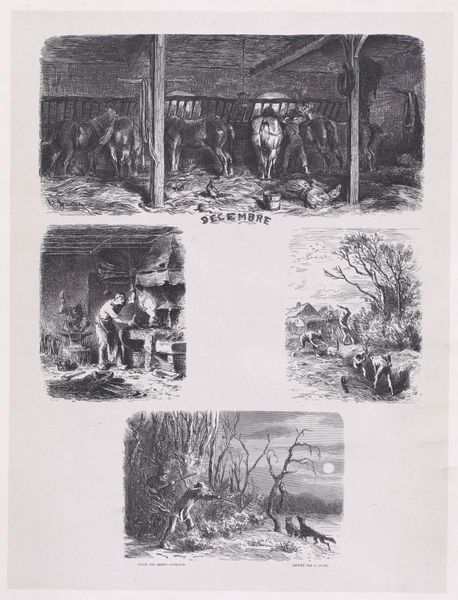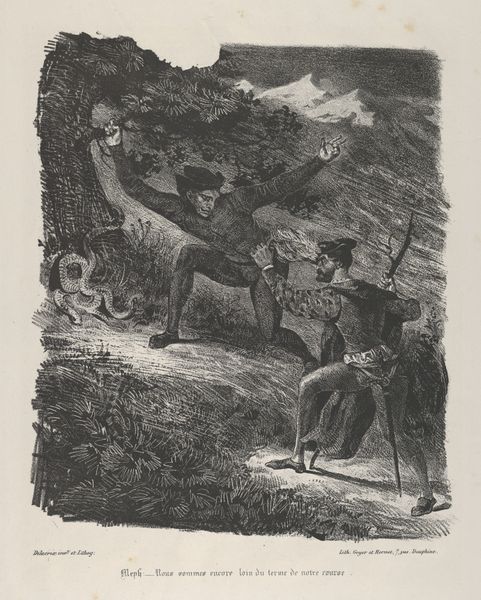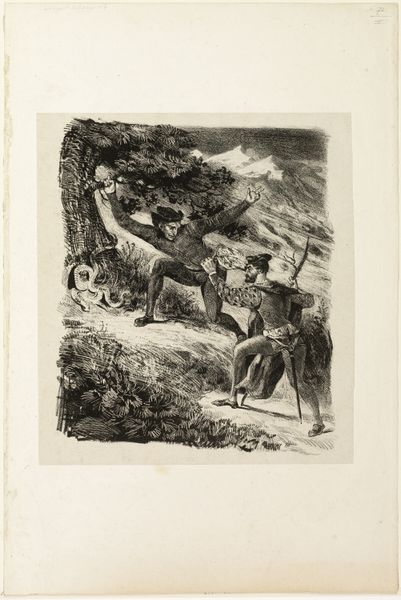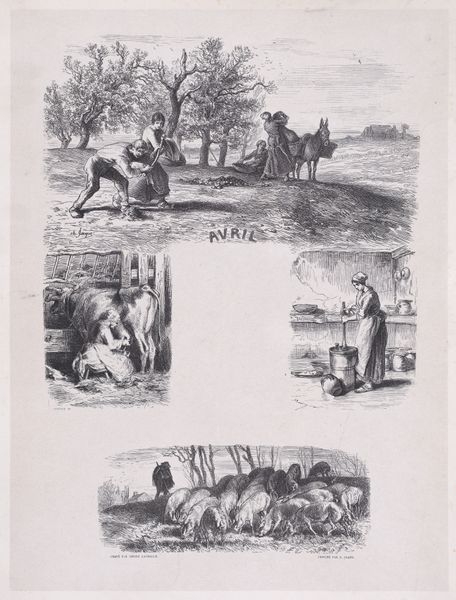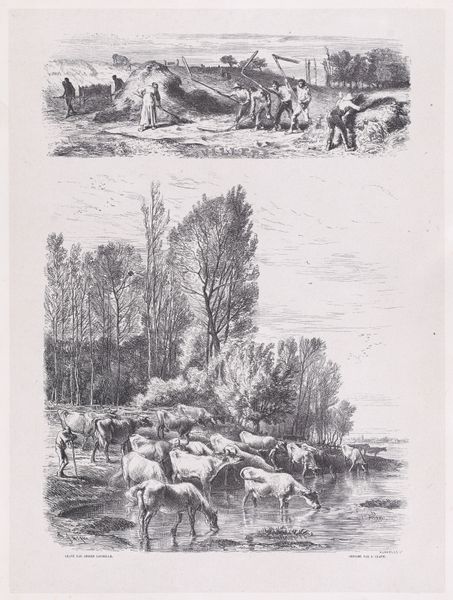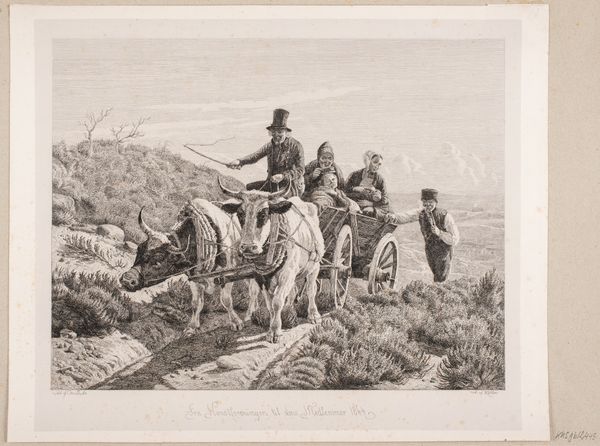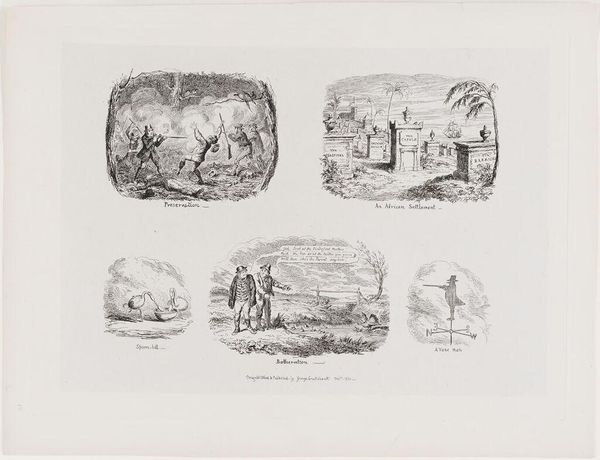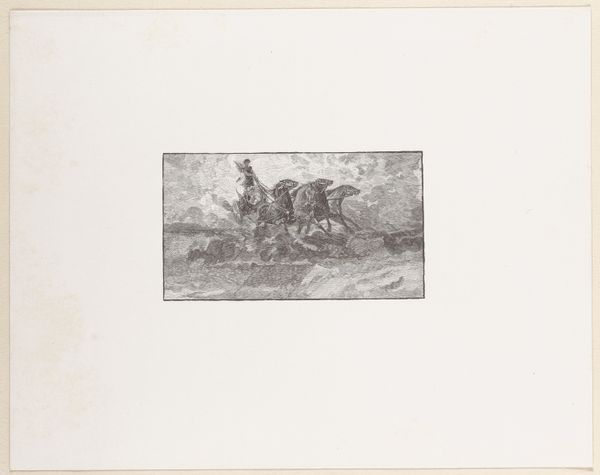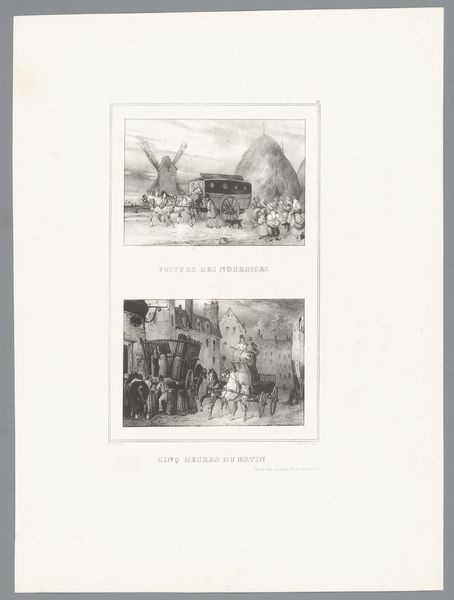
drawing, print, etching, woodcut
#
drawing
# print
#
etching
#
landscape
#
woodcut
#
genre-painting
#
realism
Dimensions: Sheet: 14 1/8 × 10 11/16 in. (35.9 × 27.1 cm) Image: 12 5/8 × 9 3/16 in. (32.1 × 23.3 cm)
Copyright: Public Domain
Editor: This is Charles Jacque’s etching, “October, from Album of Rustic Subjects,” created in 1859. I’m immediately struck by the contrast between the laboring figures and the serene landscape in the background. The scene feels quite active, and yet the monochrome limits how evocative the landscape can truly be. How do you interpret this work through its formal qualities? Curator: Notice the way Jacque uses hatching and cross-hatching to create depth and texture, particularly in the foliage. This not only defines the forms within the scene, differentiating, for example, between the densely packed grapevines and the open space behind them, but also constructs an internal dynamism. Editor: I see what you mean, the different densities of marks almost create separate zones of activity within the single image. It's like a collage but made purely with etching. Curator: Precisely. Consider how the light interacts with the varying densities of line. What sort of visual effect do you see being achieved? Editor: I’m drawn to the contrasts, of course. The light seems to catch on the edges of objects, almost like he is highlighting their shapes. It lends an appealing geometry to the overall composition, in spite of the otherwise realistic setting. Curator: The use of stark light against dense shadows reinforces a strong sense of contrast and allows you, the viewer, to move across and perceive the visual relationships between otherwise isolated compositional fields. Do you consider these compositional strategies successful, or unsuccessful? Editor: Well, it helps make this print compelling to a contemporary eye. Thinking about what you have noted, I do find myself intrigued by the image's various, visually distinct, segments, from foreground to background. Curator: And that awareness highlights how Jacque constructs this space with lines and form, creating a multi-layered visual experience and a testament to the power of formal considerations in representational art. I see much more when focusing on its internal architecture, not the overt theme of labor.
Comments
No comments
Be the first to comment and join the conversation on the ultimate creative platform.
